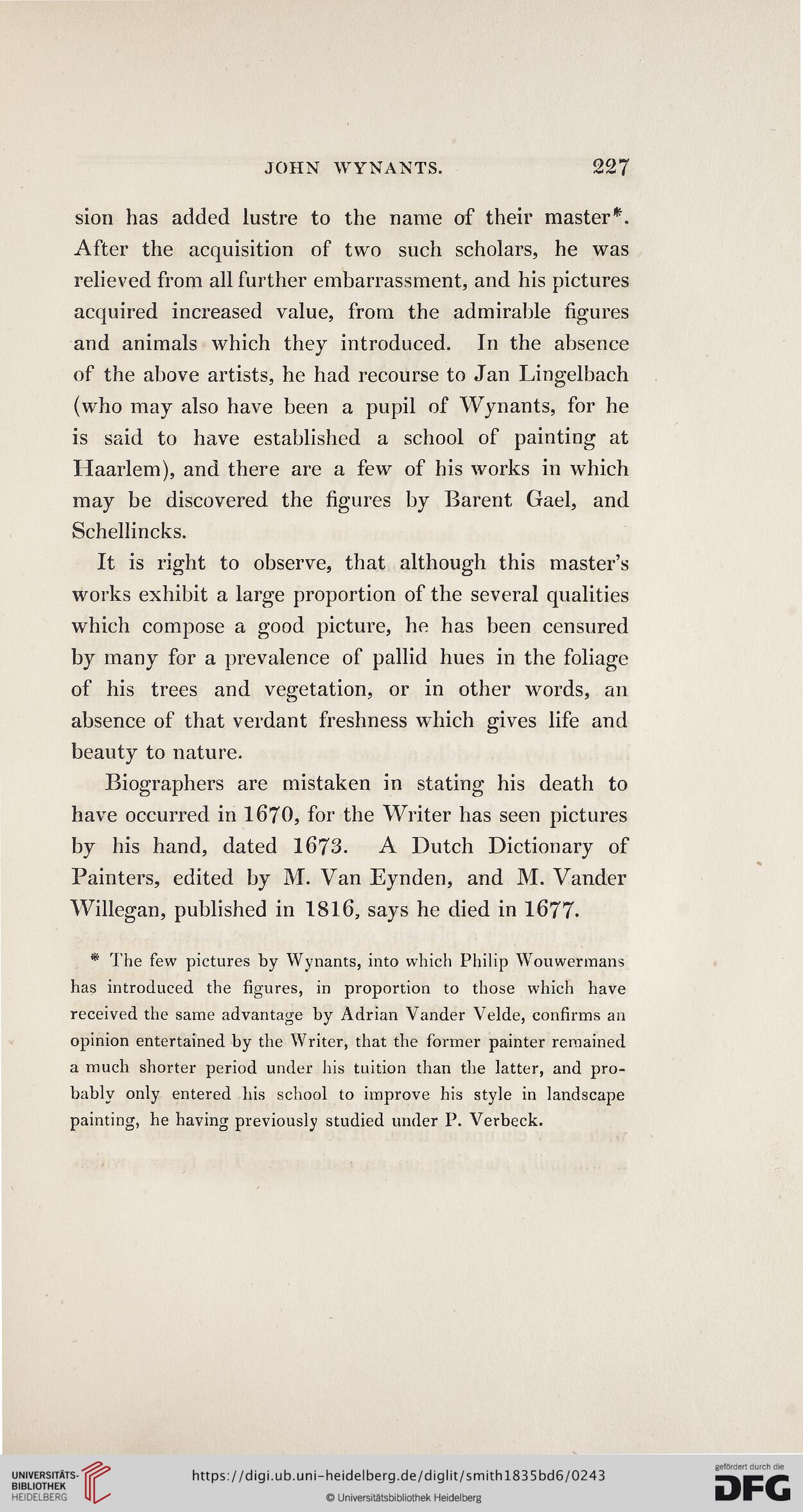JOHN WYNANTS.
227
sion has added lustre to the name of their master*.
After the acquisition of two such scholars, he was
relieved from all further embarrassment, and his pictures
acquired increased value, from the admirable figures
and animals which they introduced. In the absence
of the above artists, he had recourse to Jan Lingelbach
(who may also have been a pupil of Wynants, for he
is said to have established a school of painting at
Haarlem), and there are a few of his works in which
may be discovered the figures by Barent Gael, and
Schellincks.
It is right to observe, that although this master’s
works exhibit a large proportion of the several qualities
which compose a good picture, he has been censured
by many for a prevalence of pallid hues in the foliage
of his trees and vegetation, or in other words, an
absence of that verdant freshness which gives life and
beauty to nature.
Biographers are mistaken in stating his death to
have occurred in 1670, for the Writer has seen pictures
by his hand, dated 1673. A Dutch Dictionary of
Painters, edited by M. Van Eynden, and M. Vander
Willegan, published in 1816, says he died in 1677.
* The few pictures by Wynants, into which Philip Wouwermans
has introduced the figures, in proportion to those which have
received the same advantage by Adrian Vander Velde, confirms an
opinion entertained by the Writer, that the former painter remained
a much shorter period under his tuition than the latter, and pro-
bably only entered his school to improve his style in landscape
painting, he having previously studied under P. Verbeck.
227
sion has added lustre to the name of their master*.
After the acquisition of two such scholars, he was
relieved from all further embarrassment, and his pictures
acquired increased value, from the admirable figures
and animals which they introduced. In the absence
of the above artists, he had recourse to Jan Lingelbach
(who may also have been a pupil of Wynants, for he
is said to have established a school of painting at
Haarlem), and there are a few of his works in which
may be discovered the figures by Barent Gael, and
Schellincks.
It is right to observe, that although this master’s
works exhibit a large proportion of the several qualities
which compose a good picture, he has been censured
by many for a prevalence of pallid hues in the foliage
of his trees and vegetation, or in other words, an
absence of that verdant freshness which gives life and
beauty to nature.
Biographers are mistaken in stating his death to
have occurred in 1670, for the Writer has seen pictures
by his hand, dated 1673. A Dutch Dictionary of
Painters, edited by M. Van Eynden, and M. Vander
Willegan, published in 1816, says he died in 1677.
* The few pictures by Wynants, into which Philip Wouwermans
has introduced the figures, in proportion to those which have
received the same advantage by Adrian Vander Velde, confirms an
opinion entertained by the Writer, that the former painter remained
a much shorter period under his tuition than the latter, and pro-
bably only entered his school to improve his style in landscape
painting, he having previously studied under P. Verbeck.




